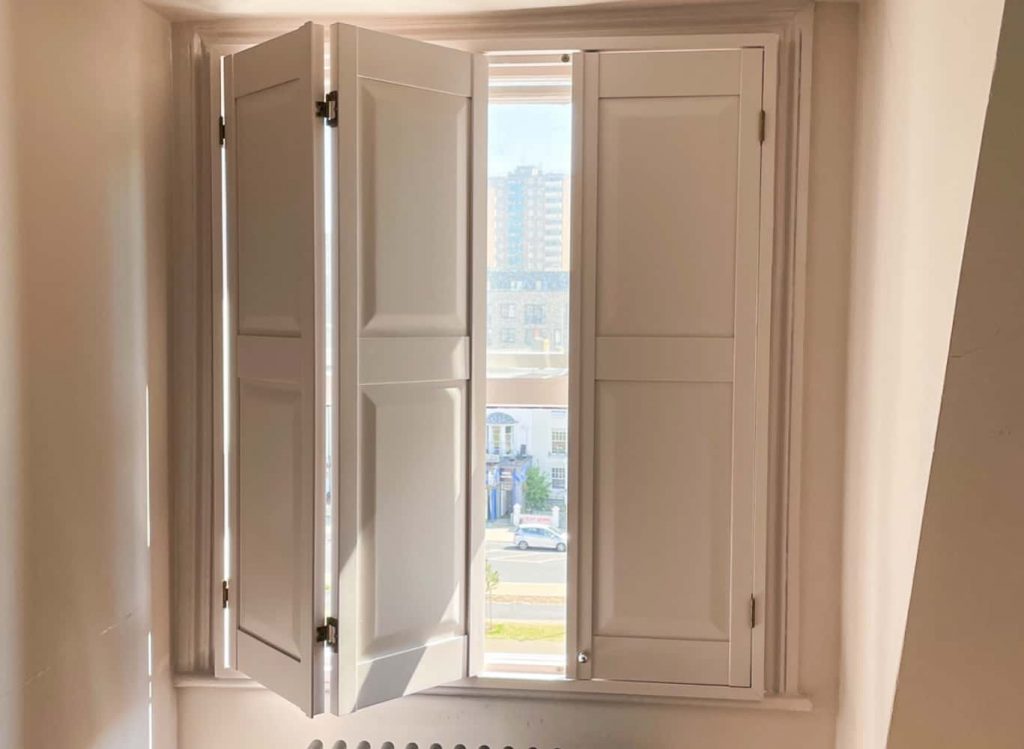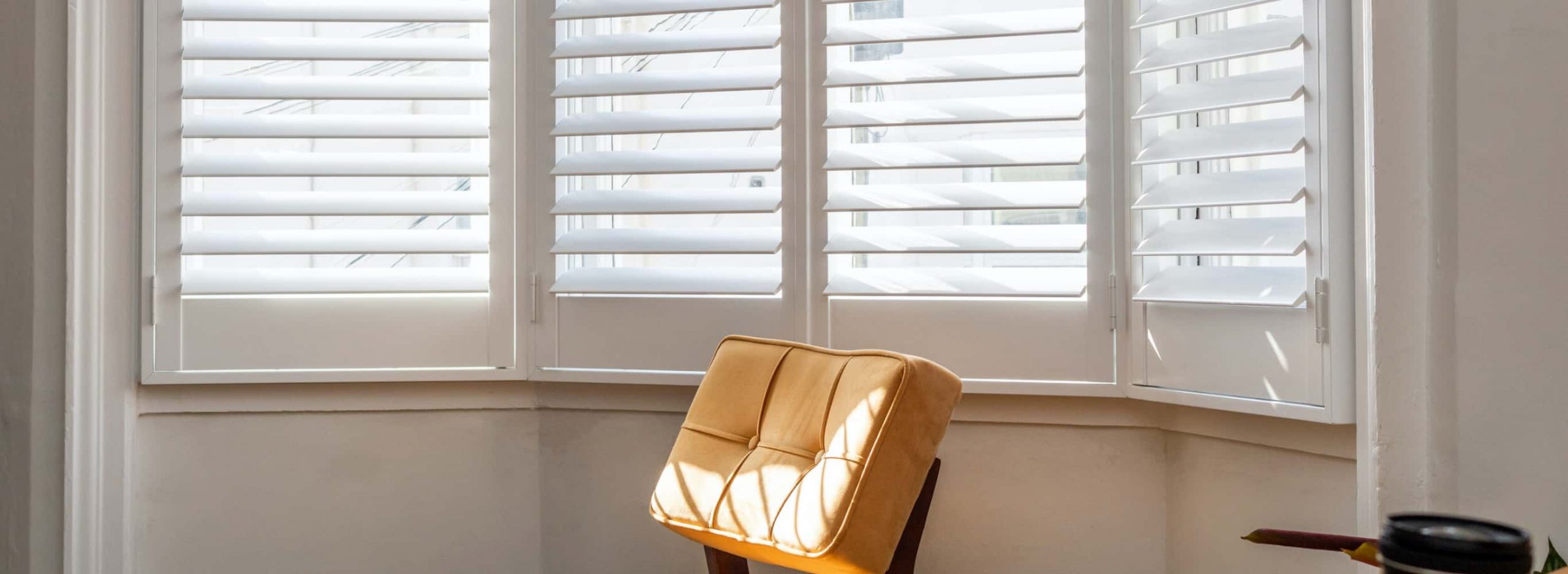Why Are Vertical Shutters So Rare? | The Brighton Shutter Co

The vast majority of panel shutters are horizontally aligned and have been for centuries, but why is this the case, and why do we so rarely see the reverse?
The reason why horizontal shutters are so common is that historically Venetian blinds and shutters have always been made with horizontal louvres, and they are perfectly suited for controlling the light levels of a room.
However, a much rarer configuration, at least with shutters, is shutters with vertical louvres instead of horizontal ones, which can provide a very dramatic look, particularly for rooms with larger windows.
Given the popularity of floor-to-ceiling blinds and the development of effective window coverings for larger and taller windows, it may seem surprising that vertical louvres are less common, but the reasons why are based more on practicality and function than feasibility.
From a feasibility standpoint, they can certainly be manufactured; vertical solid curtain blinds exist and can be commonly seen in many public buildings. All that would need to be done in addition to this construction process is to create a solid panel around the vertical louvres.
This certainly could be made, but why is it far less common than horizontal shutters?
Part of the reason is expense; by definition, a vertically-aligned panel shutter would have longer louvres than a horizontal one, which for many solid wood shutters increases the manufacturing costs to ensure the shutter is as solid and long-lasting as people expect it to be.
As well as this, there is an issue of practicality. Most shutters with louvres are plantation shutters that are designed to open and close as well as have adjustable shutters.
As these panels can be opened regardless, the practicality benefits of vertical shutters are vastly reduced compared to floor-to-ceiling vertical blinds, given that many panels can be opened individually.
Horizontal louvres provide more precise light control and can create the perfect ambience for a building.
Related articles

The Truth Behind Common Shutter Myths
Solid wood shutters are the best of both worlds in that they provide a distinctive look to your home whilst also effectively improving privacy and allowing you to control the amount of light in your home. However, there are a few common misconceptions about these versatile solid window coverings that can cause people to get […]

Are Shutters Eco-Friendly?
Making our homes more sustainable and eco-friendly will become increasingly important as time goes on and the impacts of climate change are felt, but there are lots of ways in which you can boost the green credentials of your property, helping to save the planet and reducing your energy bills all at the same time.